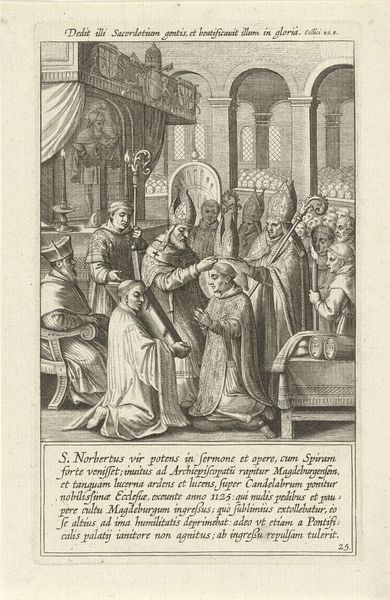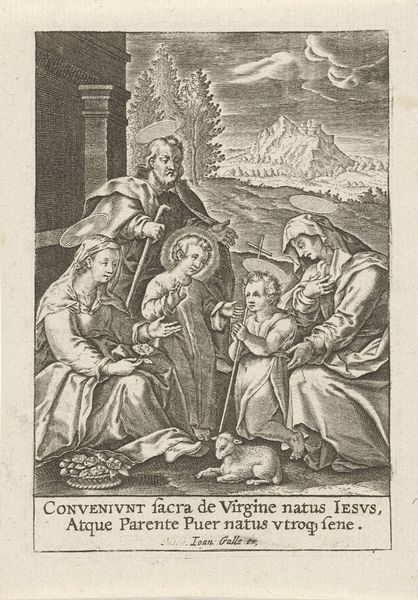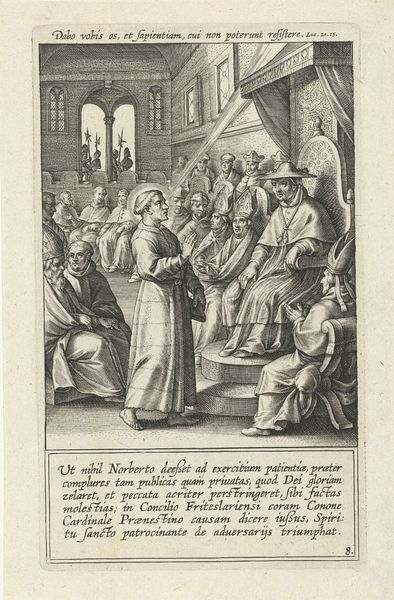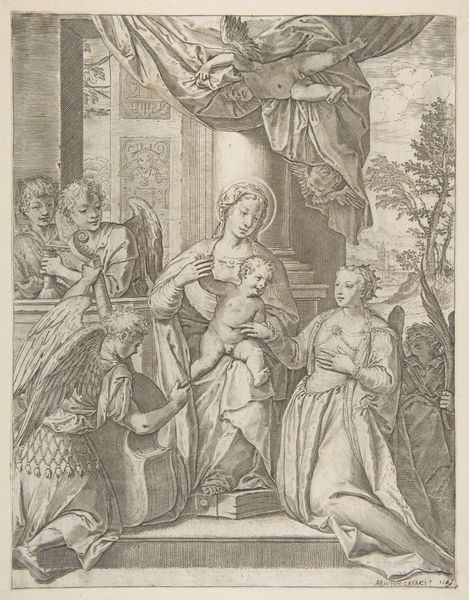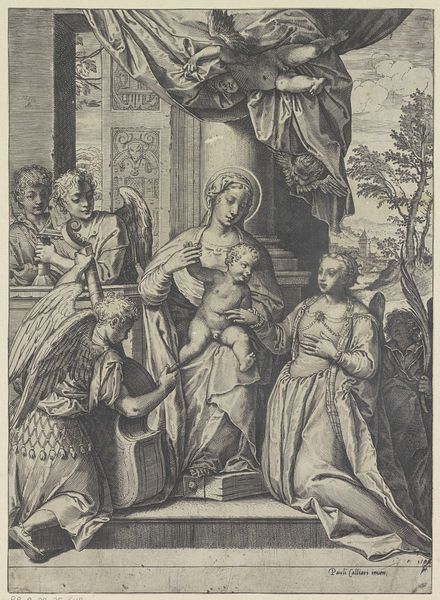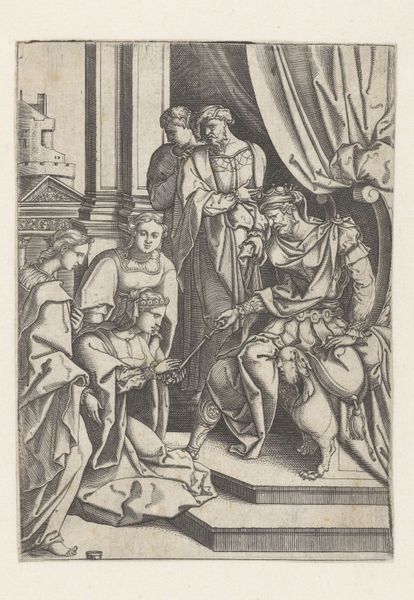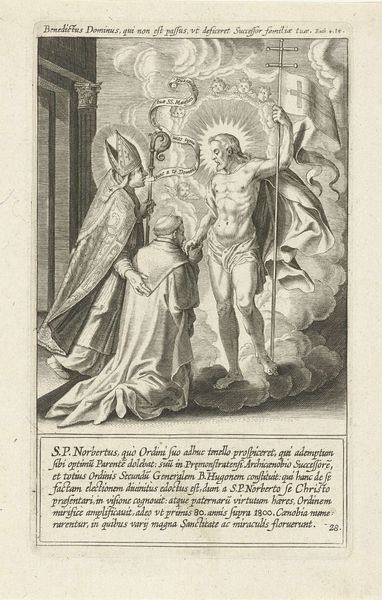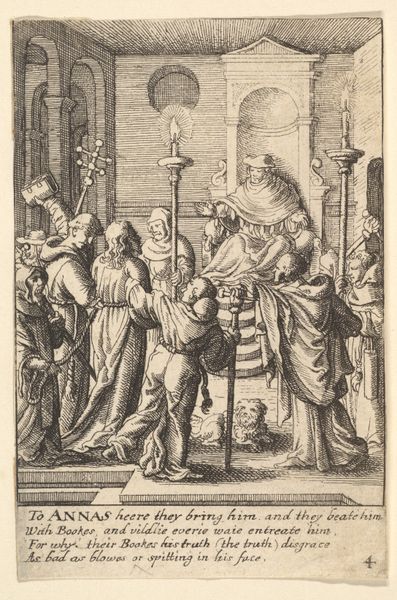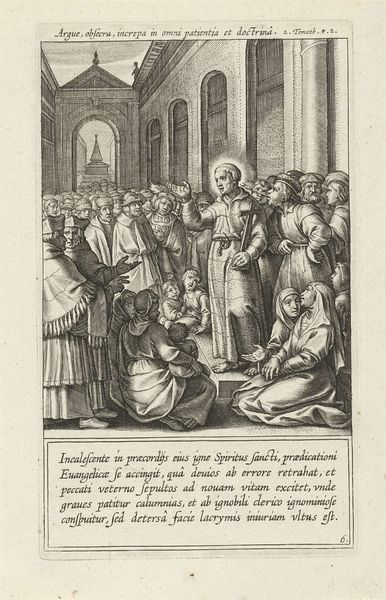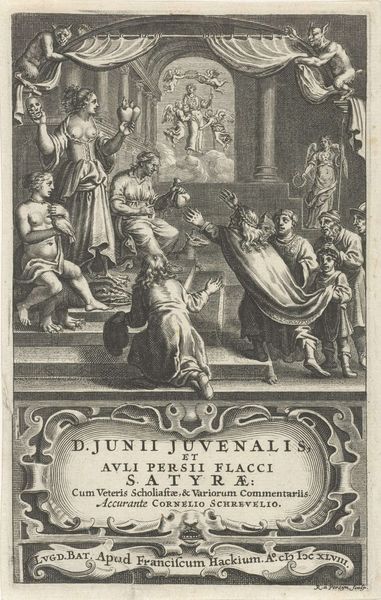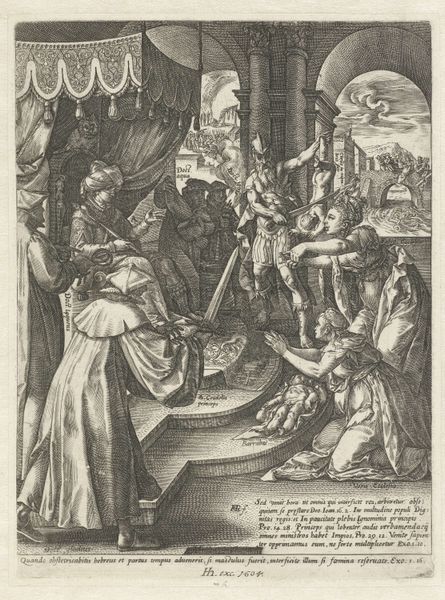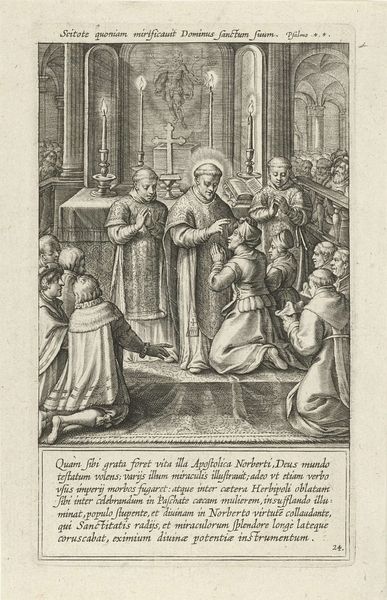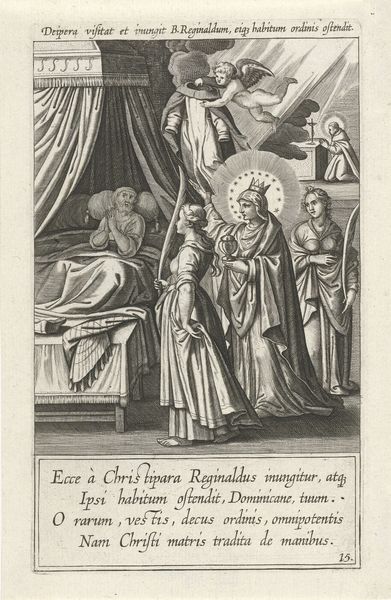
Catharina vraagt paus Gregorius XI om terug te keren naar Rome 1603
0:00
0:00
print, engraving
#
portrait
#
baroque
# print
#
pen illustration
#
old engraving style
#
figuration
#
line
#
history-painting
#
engraving
Dimensions: height 150 mm, width 90 mm
Copyright: Rijks Museum: Open Domain
Curator: Here we have "Catherine Asks Pope Gregory XI to Return to Rome," a 1603 engraving by Cornelis Galle I. The scene depicts a rather assertive Catherine of Siena, flanked by other figures, petitioning a seated Pope. What catches your eye initially? Editor: That central halo! It draws the eye straight to Catherine; then, paradoxically, my eye also goes to the Pope's very round belly. He’s a man who has definitely embraced earthly pleasures, perhaps despite himself, in juxtaposition with Saint Catherine who seems so earnest. There's a delicious contrast here. Curator: Absolutely. The symbols are striking, right? Saint Catherine’s halo marking her divinity, contrasting with the Pope's very corporeal form under layers of religious vestments. I'm also captivated by the formal composition, typical of Baroque prints of this era, with the careful staging that serves to showcase the drama unfolding. It's about the narrative as much as the aesthetic. Editor: It makes me think of power and persuasion, and the audacity of Saint Catherine, an ordinary woman, essentially telling the Pope, spiritual leader of the Western world, what he should do. It speaks to inner strength, even defiance. I notice also that it’s made with fine, dark lines that somehow make the entire image pop with urgency. It almost quivers, the image seems charged with intent. Curator: Exactly! Galle was a master engraver. He utilizes lines to generate an active interplay of dark and light to intensify this dramatic appeal. We're witnessing a significant moment in history; Catherine's visit was crucial in persuading Gregory XI to return the papacy to Rome after nearly 70 years in Avignon. It's also an exercise in visualizing sacred influence and authority. Editor: Considering the historical impact this scene signifies, that gives added layers to its interpretation. Seeing the characters visualized in stark monochrome as almost mythic figures of authority versus saintly purity really gets you thinking. What do symbols of power mean over time, especially when it seems, like in this picture, inner resolve trumps temporal power? Curator: It is like seeing her willpower almost physically push against this structure of institutional dominance. What’s left for me is thinking about how such an image must have galvanized the public then, how the image worked to instill ideas and stir people’s minds toward its cause, which is something it still inspires now! Editor: And that is precisely the beauty of a lasting visual: though styles change and empires crumble, the essence of human drama as revealed in these symbolic stories keeps on reverberating across time.
Comments
No comments
Be the first to comment and join the conversation on the ultimate creative platform.
